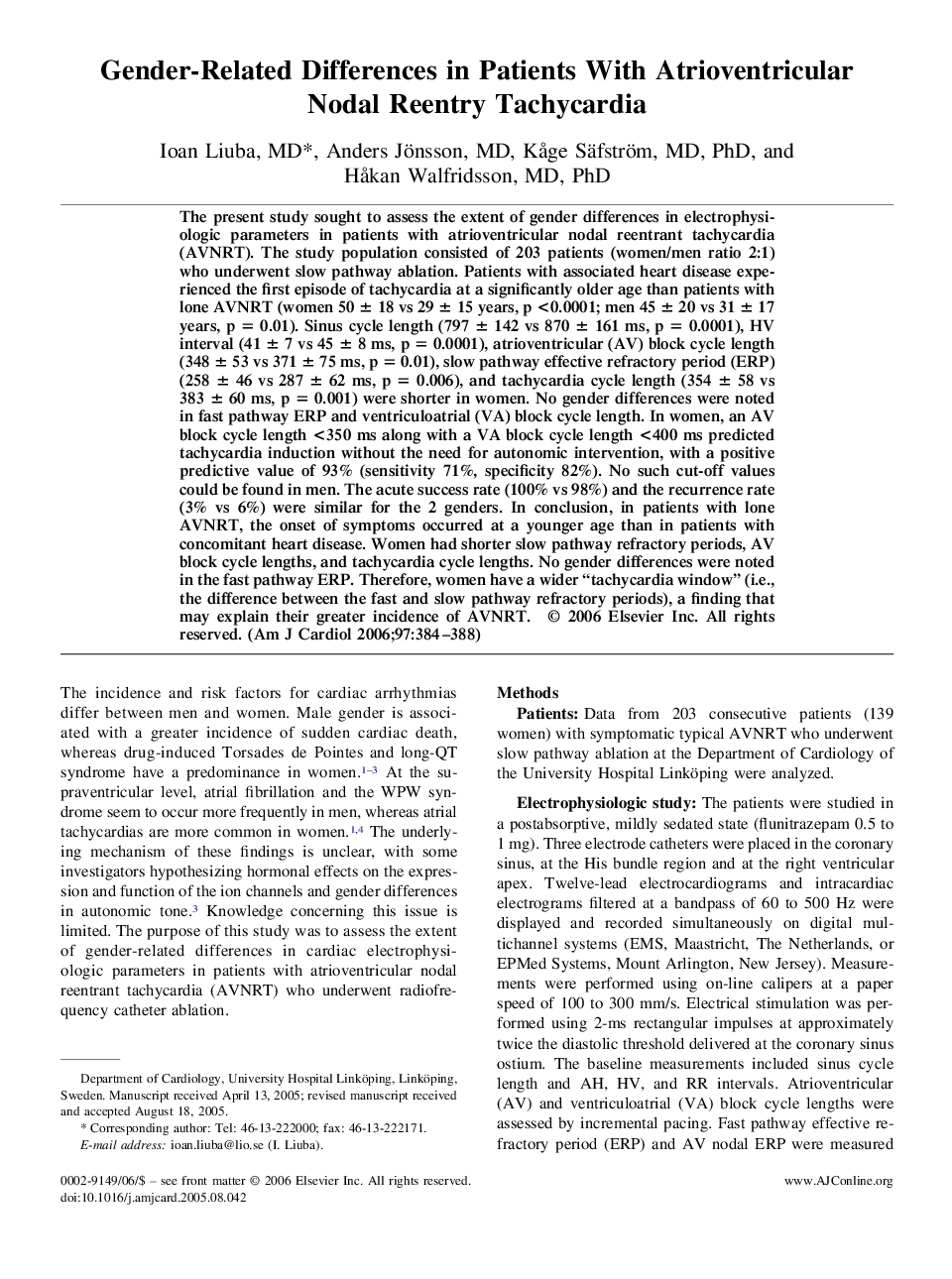| Article ID | Journal | Published Year | Pages | File Type |
|---|---|---|---|---|
| 2861891 | The American Journal of Cardiology | 2006 | 5 Pages |
The present study sought to assess the extent of gender differences in electrophysiologic parameters in patients with atrioventricular nodal reentrant tachycardia (AVNRT). The study population consisted of 203 patients (women/men ratio 2:1) who underwent slow pathway ablation. Patients with associated heart disease experienced the first episode of tachycardia at a significantly older age than patients with lone AVNRT (women 50 ± 18 vs 29 ± 15 years, p <0.0001; men 45 ± 20 vs 31 ± 17 years, p = 0.01). Sinus cycle length (797 ± 142 vs 870 ± 161 ms, p = 0.0001), HV interval (41 ± 7 vs 45 ± 8 ms, p = 0.0001), atrioventricular (AV) block cycle length (348 ± 53 vs 371 ± 75 ms, p = 0.01), slow pathway effective refractory period (ERP) (258 ± 46 vs 287 ± 62 ms, p = 0.006), and tachycardia cycle length (354 ± 58 vs 383 ± 60 ms, p = 0.001) were shorter in women. No gender differences were noted in fast pathway ERP and ventriculoatrial (VA) block cycle length. In women, an AV block cycle length <350 ms along with a VA block cycle length <400 ms predicted tachycardia induction without the need for autonomic intervention, with a positive predictive value of 93% (sensitivity 71%, specificity 82%). No such cut-off values could be found in men. The acute success rate (100% vs 98%) and the recurrence rate (3% vs 6%) were similar for the 2 genders. In conclusion, in patients with lone AVNRT, the onset of symptoms occurred at a younger age than in patients with concomitant heart disease. Women had shorter slow pathway refractory periods, AV block cycle lengths, and tachycardia cycle lengths. No gender differences were noted in the fast pathway ERP. Therefore, women have a wider “tachycardia window” (i.e., the difference between the fast and slow pathway refractory periods), a finding that may explain their greater incidence of AVNRT.
